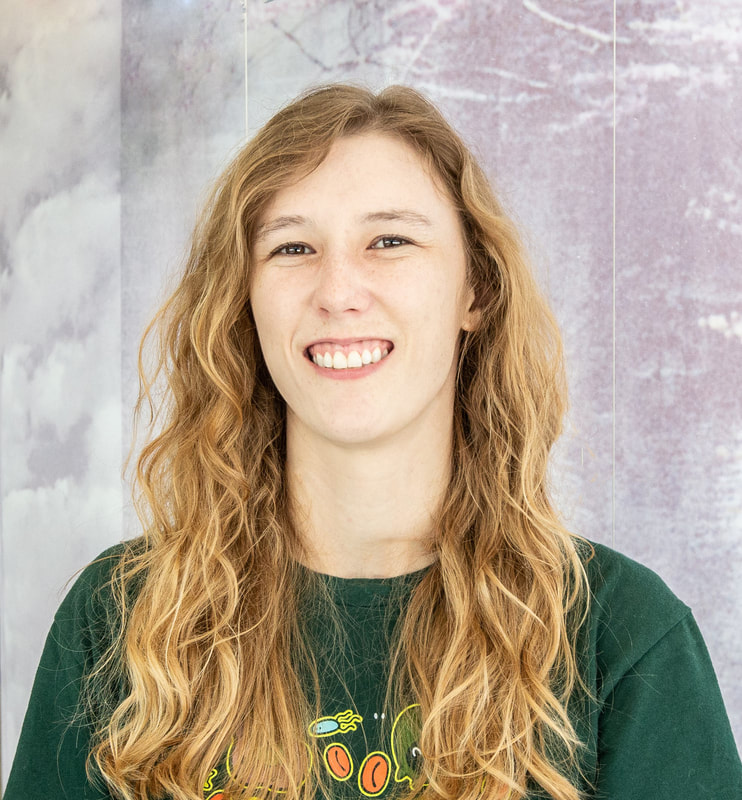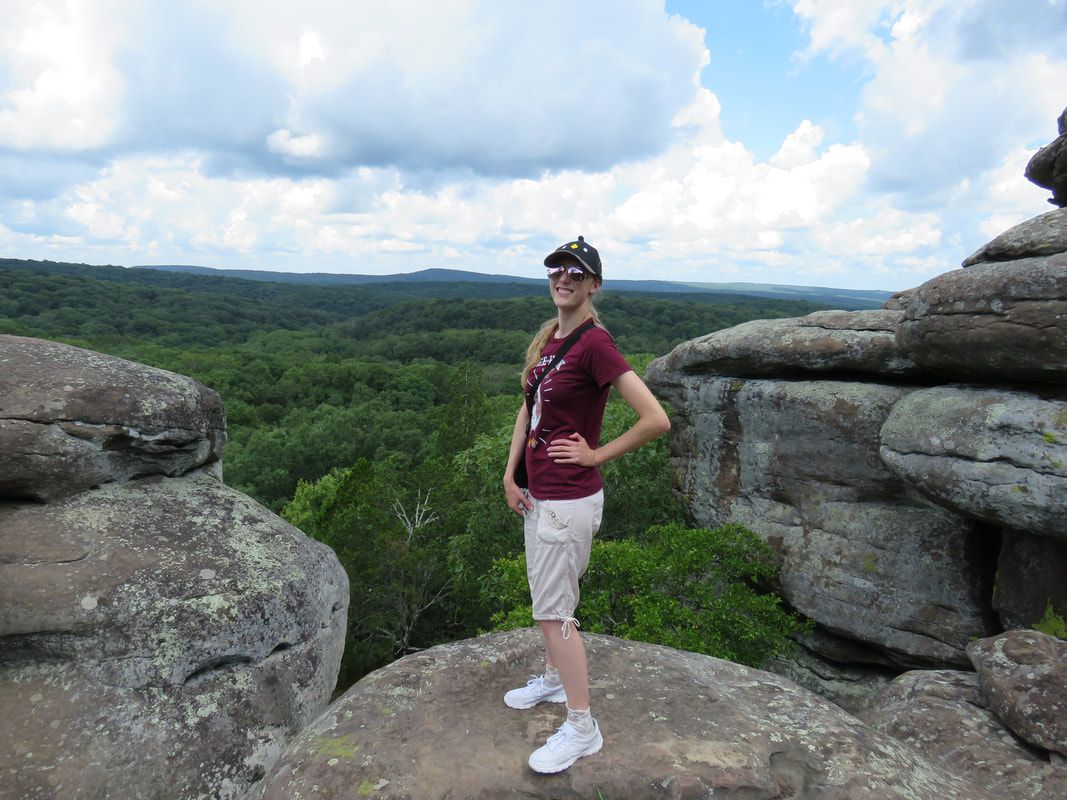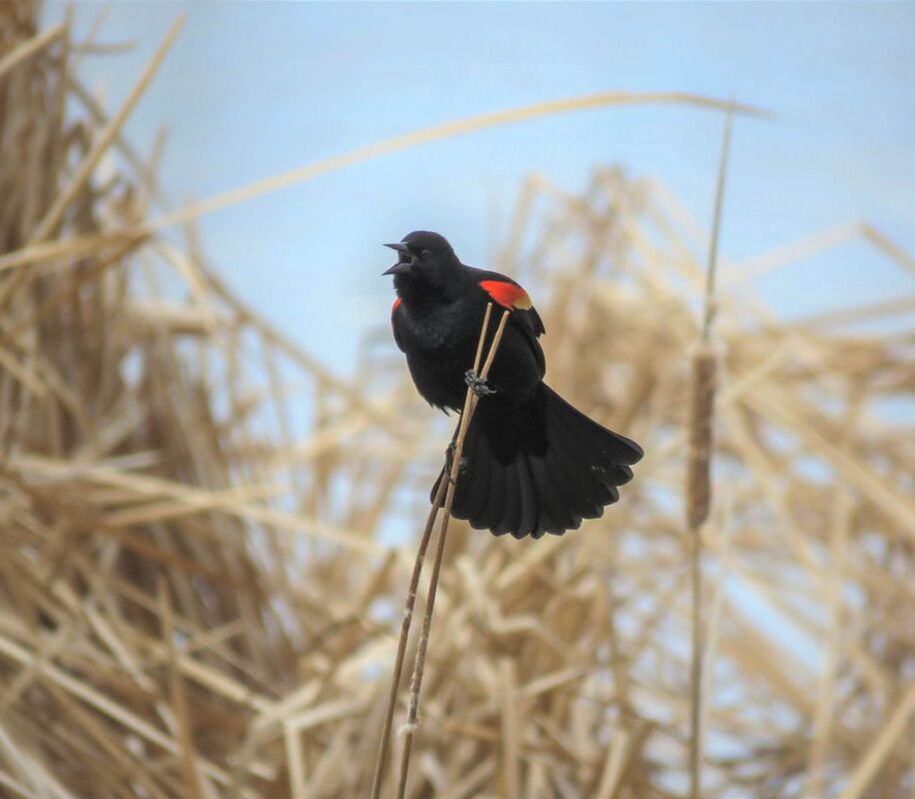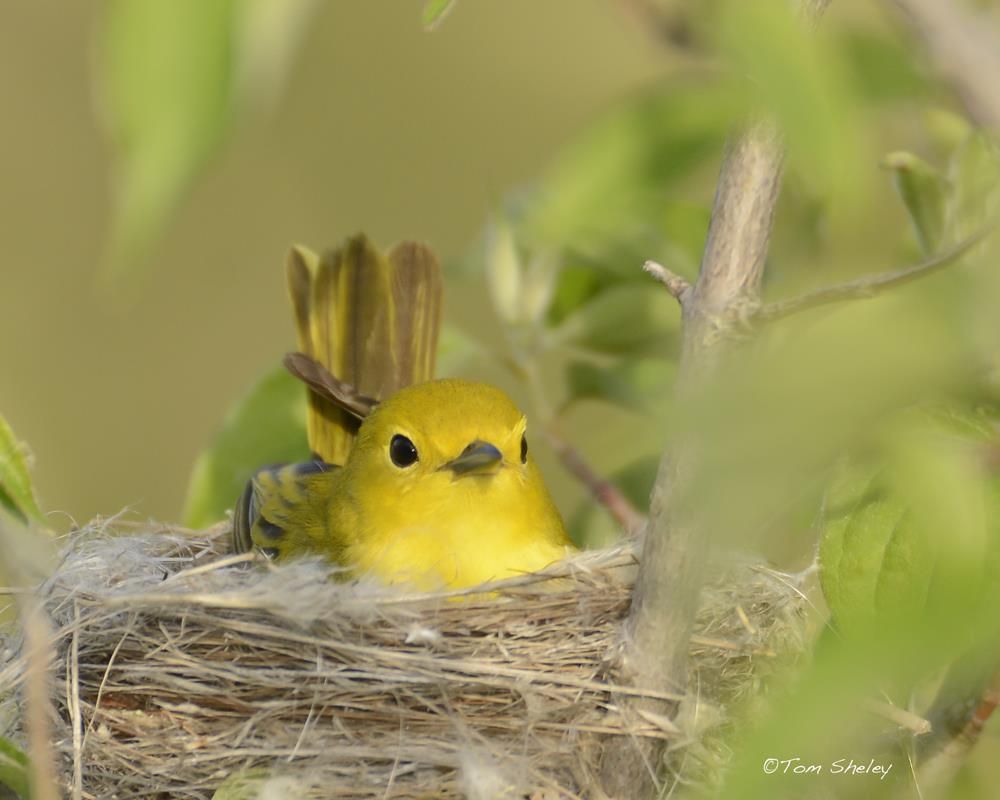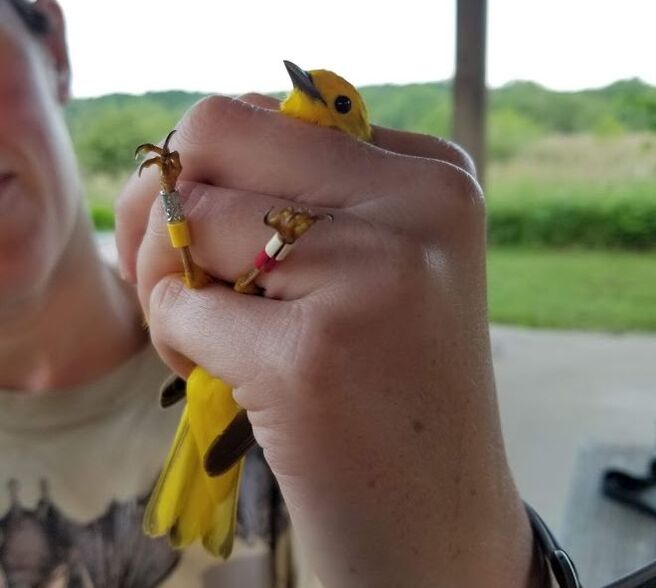About Me.I attended St. Mary's College of Maryland where I obtained a bachelors in Biology and Psychology. I became very interested in behavioral research during an animal behavior class in undergrad and decided to pursue a research position in a lab after graduating. I was hired as a research technician at University of Maryland College Park in Dr. Robert Dooling's lab where I studied auditory perceptual abilities and vocal communication in canaries, zebra finches and budgerigars. Within 3 years I had become a lab manager and author an on 3 manuscripts.
I started my dissertation at University of Illinois Urbana-Champaign in 2017 with Dr. Mark Hauber. My graduate work focused on Yellow Warblers, which produce functional reference calls (seet calls) that denote Brown-headed Cowbirds, a brood parasite. During my dissertation, I studied the sensory ecology of seet calling in Yellow Warblers, by presenting playbacks of seet calls, cowbird calls, and other threats to the birds. I also studied the response of Red-winged Blackbirds to these calls, through which I discovered blackbirds eavesdrop on the seet call and use it as a frontline defense against brood parasitism. I earned my Ph.D. in Evolution, Ecology, and Behavior in August 2022. I decided to branch out and gain more science communication and writing skills since talking with the public about my research was always one of my favorite parts of the job. So, I accepted a postdoctoral position at the Carl R. Woese Institute for Genomic Biology at the University of Illinois Urbana Champaign, with the title of Science Writing Fellow. Here, I write about the cool research published at the university and the scientists that making it happen! Along the way I also was recruited as a science writer for City University New York, specifically for the Advanced Science Research Center. I've really come to love science communication and getting the word out about the amazing research everyone does! |
Postdoctoral Science Writing.
For my postdoc I am a science writing fellow at the IGB, writing sci-comm pieces about the awesome research that happens here! Click here to read some of my articles!
I also work as a part time science writer for the CUNY Advanced Science Researcher Center. My articles can be found here
Graduate Research.
Yellow Warbler responses to playbacksYellow Warblers need to respond appropriately to various threats at near their nest, whether they be brood parasites or nest predators. These threats also vary in severity across the nesting cycle, and Yellow Warblers use different calls to differentiate threats. Chip calls are used as a general alarm call towards predators and conspecifics, while seet calls are a specialized alarm call used solely against cowbirds. As such, seet call production is high during laying/incubation when cowbirds are a threat, and low during nestling stage when brood parasitism is no longer a risk.
This referential call for a brood parasite is unique to yellow warblers, and provides a fantastic system to ask questions regarding context-specific and socially-informing alarm calls. During my dissertation we found that alarm call responses by males are also low during breeding season but before nesting begins, with little to no chip responses towards nest predators or seet responses to cowbirds. Yellow Warbler alarm calling towards nest-specific threats seems to be mediated by pairing status and presence of a nest. We also presented playbacks to female warblers as a quasi-replication to test if responses to parasites and predators are similar between model presentation experiments and our playback experiment, which we found to be the case. |
Red-winged Blackbirds eavesdrop on seet callsDuring our Yellow Warbler playback experiments we stumbled upon a new discovery - Red-winged Blackbirds were eavesdropping on seet calls and responding aggressively to our seet playbacks. To further explore these, we presented playbacks of cowbirds, seet calls, a nest predator and a control to measure blackbird responses. We found that similar to Yellow Warblers, Red-winged Blackbird males and females responded similarly aggressive towards cowbird and seet playbacks, and that this was affected by brood parasitism risk via nesting stage. Through these studies we discovered the first instance of heterospecific eavesdropping on a referential call for brood parasitism.
|
Yellow Warblers alter future behavior based on brood parasitism risk - Mental time travel?Female warblers swiftly move to sit on their nests in response to seet calls, which may prevent parasitism by physically blocking female cowbirds
from inspecting and accessing the nest. However, cowbirds lay their eggs just prior to sunrise, not during the daytime. So we tested whether female Yellow Warblers more closely monitor their nest the morning following playbacks of seet calls in contrast to chip calls or silence. We found daytime seet call playbacks caused female warblers to leave their nests less often the following morning, relative to playbacks of generic antipredator calls. Thus, seet calls may also convey parasitism risk and elicit mental time travel to protect the nest when it is vulnerable to egg laying by cowbirds. |
Physiological and Neural ResponsesHow are functional reference calls processed in the brain, and how is the physiological state of the bird altered when hearing and processing these calls? We will be collecting blood samples from naïve hand-raised birds after hearing playbacks to measure corticosterone levels in response to different alarm calls and threats. We also will be measuring BOLD responses of Yellow Warblers in the Beckman Institute's fMRI machine in response to playbacks to determine where seet calls are processed in the brain, and if there are specialized neural substrates that activate similarly to seet calls and cowbird chatter.
|
